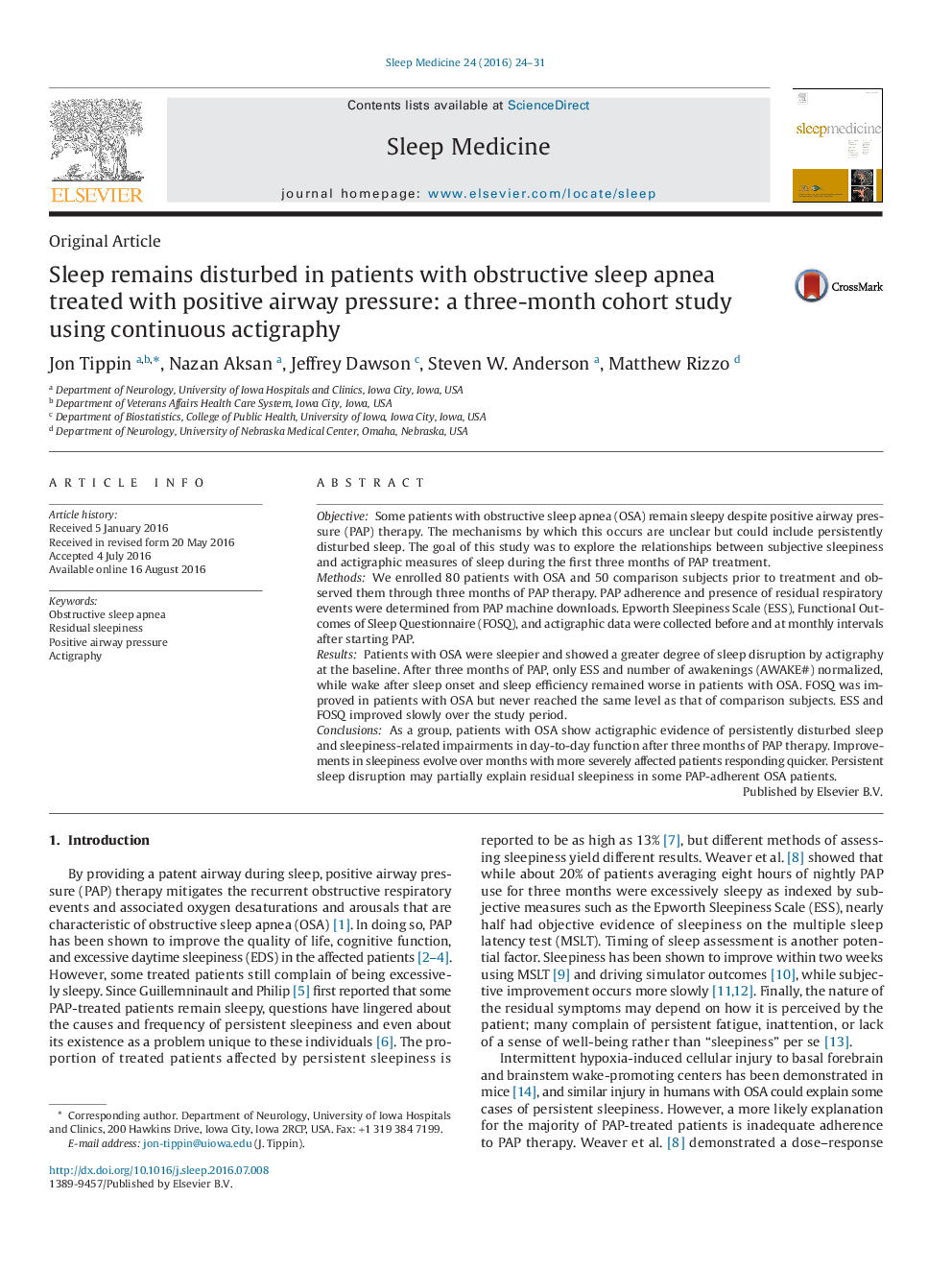| کد مقاله | کد نشریه | سال انتشار | مقاله انگلیسی | نسخه تمام متن |
|---|---|---|---|---|
| 6060035 | 1586484 | 2016 | 8 صفحه PDF | دانلود رایگان |

- Some actigraphic measures of sleep quality remain disturbed in patients with OSA after 3 months of therapy in PAP-adherent individuals.
- Overt sleepiness as indexed by ESS normalizes with PAP, but FOSQ shows evidence of sleepiness-related quality-of-life impairments in patients.
- Subjective symptoms as reported in ESS and FOSQ improve slowly after introduction of PAP.
ObjectiveSome patients with obstructive sleep apnea (OSA) remain sleepy despite positive airway pressure (PAP) therapy. The mechanisms by which this occurs are unclear but could include persistently disturbed sleep. The goal of this study was to explore the relationships between subjective sleepiness and actigraphic measures of sleep during the first three months of PAP treatment.MethodsWe enrolled 80 patients with OSA and 50 comparison subjects prior to treatment and observed them through three months of PAP therapy. PAP adherence and presence of residual respiratory events were determined from PAP machine downloads. Epworth Sleepiness Scale (ESS), Functional Outcomes of Sleep Questionnaire (FOSQ), and actigraphic data were collected before and at monthly intervals after starting PAP.ResultsPatients with OSA were sleepier and showed a greater degree of sleep disruption by actigraphy at the baseline. After three months of PAP, only ESS and number of awakenings (AWAKE#) normalized, while wake after sleep onset and sleep efficiency remained worse in patients with OSA. FOSQ was improved in patients with OSA but never reached the same level as that of comparison subjects. ESS and FOSQ improved slowly over the study period.ConclusionsAs a group, patients with OSA show actigraphic evidence of persistently disturbed sleep and sleepiness-related impairments in day-to-day function after three months of PAP therapy. Improvements in sleepiness evolve over months with more severely affected patients responding quicker. Persistent sleep disruption may partially explain residual sleepiness in some PAP-adherent OSA patients.
Journal: Sleep Medicine - Volume 24, August 2016, Pages 24-31